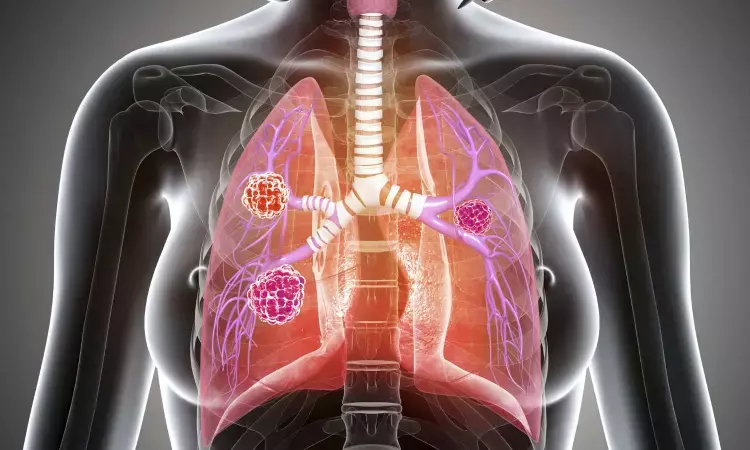- Home
- Medical news & Guidelines
- Anesthesiology
- Cardiology and CTVS
- Critical Care
- Dentistry
- Dermatology
- Diabetes and Endocrinology
- ENT
- Gastroenterology
- Medicine
- Nephrology
- Neurology
- Obstretics-Gynaecology
- Oncology
- Ophthalmology
- Orthopaedics
- Pediatrics-Neonatology
- Psychiatry
- Pulmonology
- Radiology
- Surgery
- Urology
- Laboratory Medicine
- Diet
- Nursing
- Paramedical
- Physiotherapy
- Health news
- Fact Check
- Bone Health Fact Check
- Brain Health Fact Check
- Cancer Related Fact Check
- Child Care Fact Check
- Dental and oral health fact check
- Diabetes and metabolic health fact check
- Diet and Nutrition Fact Check
- Eye and ENT Care Fact Check
- Fitness fact check
- Gut health fact check
- Heart health fact check
- Kidney health fact check
- Medical education fact check
- Men's health fact check
- Respiratory fact check
- Skin and hair care fact check
- Vaccine and Immunization fact check
- Women's health fact check
- AYUSH
- State News
- Andaman and Nicobar Islands
- Andhra Pradesh
- Arunachal Pradesh
- Assam
- Bihar
- Chandigarh
- Chattisgarh
- Dadra and Nagar Haveli
- Daman and Diu
- Delhi
- Goa
- Gujarat
- Haryana
- Himachal Pradesh
- Jammu & Kashmir
- Jharkhand
- Karnataka
- Kerala
- Ladakh
- Lakshadweep
- Madhya Pradesh
- Maharashtra
- Manipur
- Meghalaya
- Mizoram
- Nagaland
- Odisha
- Puducherry
- Punjab
- Rajasthan
- Sikkim
- Tamil Nadu
- Telangana
- Tripura
- Uttar Pradesh
- Uttrakhand
- West Bengal
- Medical Education
- Industry
Stereotactic body radiotherapy effective treatment for patients with lung neuroendocrine tumors

Primary lung neuroendocrine tumors are very rare tumors that represent about 1-2% of all lung cancer cases. Only 2,000 to 4,500 are diagnosed in the U.S. each year. The common treatment for early stage lung neuroendocrine tumors is surgery, but that is not an option for all patients. Researchers at Moffitt Cancer Center are investigating new treatment approaches for this patient population. In a new article published in the International Journal of Radiation Oncology, Biology and Physics, our team of physicians, led by Daniel Oliver, M.D., and Stephen Rosenberg, M.D., shows that stereotactic body radiotherapy, or SBRT, is an effective treatment for patients with early stage lung neuroendocrine tumors.
SBRT is a treatment approach that delivers high doses of radiation to precise areas of a tumor, minimizing damage to surrounding normal cells. Patients receiving SBRT often have less toxicity and side effects compared to treatment with conventional radiotherapy that is delivered in smaller doses each day over several weeks.
“SBRT is commonly used as a treatment for early stage non-small cell lung cancer, and our results show strong tumor control. This suggests that SBRT may also be effective for lung neuroendocrine tumors,” said Oliver, assistant member of the Department of Radiation Oncology at Moffitt. “In fact, SBRT is increasingly being used to treat early stage lung neuroendocrine tumors in clinical practice, despite the lack of consensus recommendations for this approach and very limited data on its effectiveness and toxicity in lung neuroendocrine tumor patients.”
Because of the lack of data, Oliver and his team wanted to assess the efficacy and long-term outcomes of SBRT in patients with lung neuroendocrine tumors. They performed a retrospective analysis of 48 lung neuroendocrine tumors from 46 patients who were treated with SBRT from 11 institutions across the U.S. The researchers discovered that SBRT provided strong local/regional tumor control. The three-, six- and nine-year local control rates with SBRT were 97%, 91% and 91% respectively, and only one regional recurrence occurred. The treatment was also well tolerated with only one case of SBRT-related toxicities reported, which was considered low-grade.
Since lung neuroendocrine tumors are so rare, it is difficult to conduct clinical trials for these patients. Therefore, a randomized trial will likely never be conducted to compare SBRT to surgery. Despite this, the results from the study are comparable to historical populations of lung neuroendocrine tumor patients who were treated with surgery, which is particularly notable given that many patients treated with SBRT typically have additional health conditions that can make treatment difficult and result in poorer outcomes.
“The current study is the largest and first multi-institutional series evaluating local control, toxicity and dosimetric outcomes with SBRT for early stage lung neuroendocrine tumors. Our results suggest that while surgery provides excellent outcomes, SBRT should be considered another treatment option for this patient population,” said Rosenberg, study senior author and director of MRI guided radiotherapy in Moffitt’s Department of Radiation Oncology.
Reference:
Daniel E. Oliver, Jose M. Laborde, Deepinder P. Singh, Michael T. Milano, Gregory M. Videtic, Graeme R. Williams, Michael J. Lariviere, Jason W. Chan, Gabrielle W. Peters, Roy H. Decker, Clifford G. Robinson, William G. Breen, Dawn Owen, Sibo Tian, Published:January 25, 2023 DOI:https://doi.org/10.1016/j.ijrobp.2023.01.028
Dr Kamal Kant Kohli-MBBS, DTCD- a chest specialist with more than 30 years of practice and a flair for writing clinical articles, Dr Kamal Kant Kohli joined Medical Dialogues as a Chief Editor of Medical News. Besides writing articles, as an editor, he proofreads and verifies all the medical content published on Medical Dialogues including those coming from journals, studies,medical conferences,guidelines etc. Email: drkohli@medicaldialogues.in. Contact no. 011-43720751


